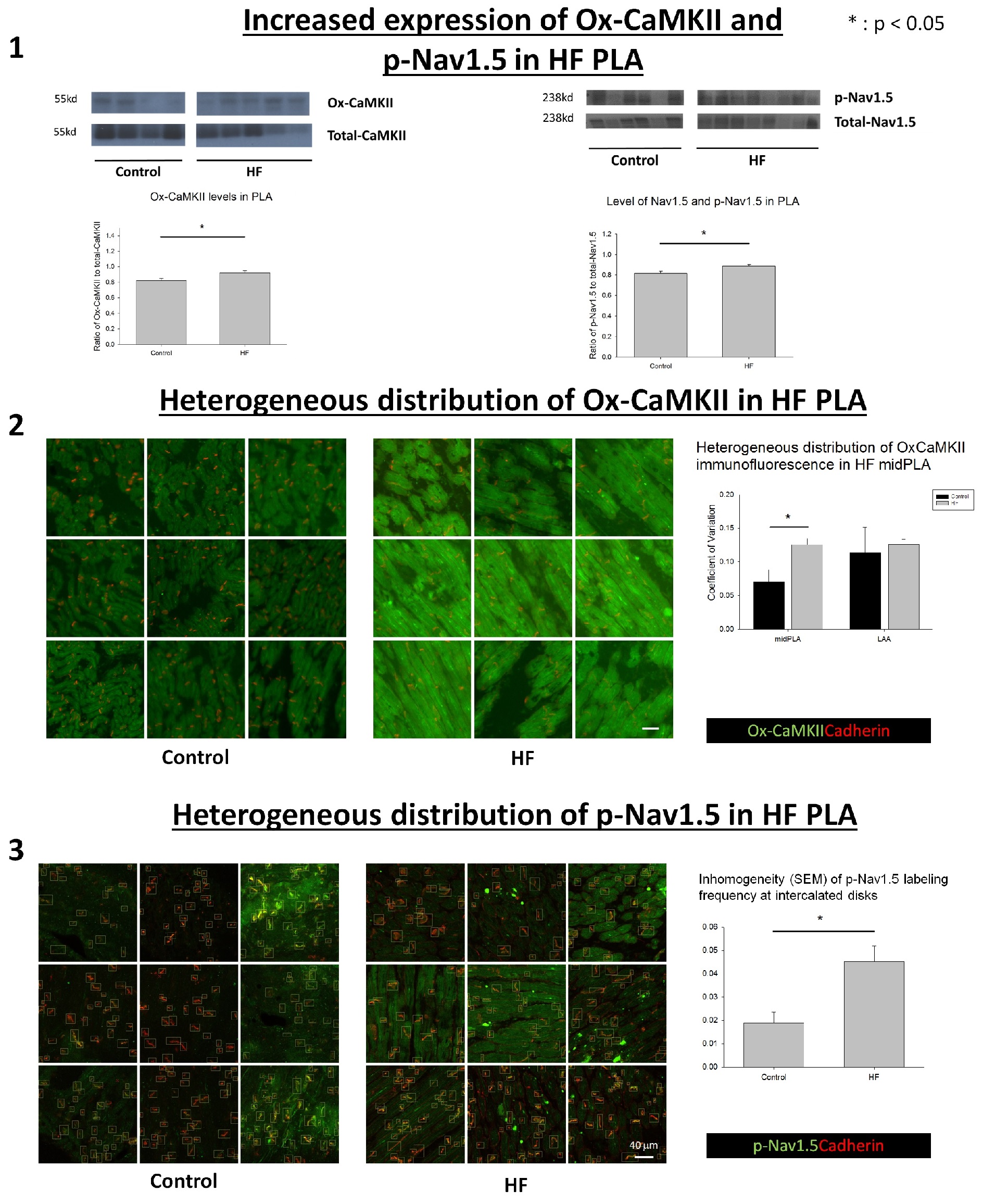Presenting Author:
Principal Investigator:
Rishi Arora, M.D.
Department:
Medicine
Keywords:
Atrial Fibrillation, Heart Failure, Oxidative Stress, CaMKII, Nav1.5
Location:
Third Floor, Feinberg Pavilion, Northwestern Memorial Hospital
B39 - Basic Science
Ox-CaMKII and CaMKII-Phosphorylated-Nav1.5 Contributes to Atrial Fibrillation in Heart Failure
Introduction: Substrate for atrial fibrillation (AF) in heart failure (HF) is thought to be mediated by slow conduction and conduction inhomogeneity (CI). Among various contributors, oxidative stress (OS) plays an important role in formation of AF substrate, especially in the setting of HF. However, the precise mechanisms by OS create electrophysiological substrate for AF in HF atrium has not been explained. One of the major signaling pathways for OS is oxidized-CaMKII (Ox-CaMKII), which regulates virtually all known ion channels and Ca2+ handling proteins, including Nav1.5. Thus, we postulate that increased manifestation and inhomogeneous distribution of Ox-CaMKII and CaMKII phosphorylated Nav1.5 at S571 (p-Nav1.5) contribute to slow and inhomogeneous conduction in HF atrium. Methods: HF was induced in dogs by ventricular pacing at 240 bpm for 3 weeks. In both HF (n = 6) and control animals (n = 4), CI and conduction velocity (CV) was assessed in the posterior left atrium (PLA) by high density mapping (130 electrodes). Expression and spatial heterogeneity of Ox-CaMKII and p-Nav1.5 was assessed by western blot and immunohistochemistry. Results: CI was increased in HF PLA, vs control (4.5 vs 2.5 @ 400ms pacing; p < 0.01, n = 4) and CV was decreased in HF PLA, vs control (0.9 vs 1.4 cm/s @ 400ms pacing; p < 0.01, n = 4). The ratio of Ox-CaMKII to total-CaMKII and the ratio of p-Nav1.5 to total-Nav1.5 is increased in HF PLA, vs control (Figure 1). The increased in OxCaMKII and p-Nav1.5 occurs preferentially in the PLA. In addition, both Ox-CaMKII and p-Nav1.5 are more heterogeneously distributed in the HF PLA, vs control (Figures 2 and 3). Conclusion: Slow and increased inhomogeneity of conduction in the PLA may contribute to AF substrate development in the failing heart. OS-induced increased amount and spatial heterogeneity of ox-CaMKII and its downstream target molecule, p-Nav1.5, is a potential new novel mechanism for slow and inhomogeneous conduction.

